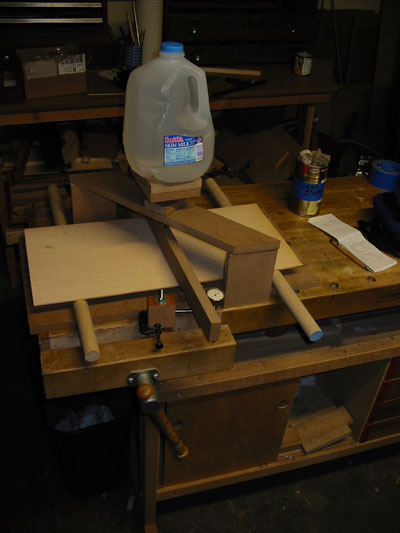I haven't taken taken Ervins class although I think it would be great. But I do test most of my wood and do top deflection on a ficture very similar to what Brock describes. I test both direction though and just rotate the dowells and indicator for the second direction.
Here's a picture of my rig. There's a 1/4 inch steel rod that actually comes in contact with the top.
It doesn't show up very well but there's a base plate with slots cut into it for the dowells to sit in.
